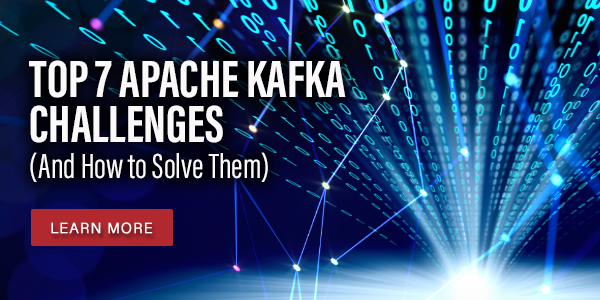Everyone has Kafka issues. Well, maybe not everyone, but most companies that end up using Apache Kafka in any meaningful way do end up facing certain Kafka challenges, most of which aren’t necessarily easy to resolve.
First off — why are companies even using Kafka in the first place?
In today’s real-time era, more and more enterprises are investing in event stream processing tools to accelerate incident response times, strengthen the customer experience, improve application performance, and analyze data generated by IoT and edge devices instantly to increase organizational agility and address issues as they arise.
As a result, the market for event stream processing is on fire, with IDC data suggesting it will grow from $1.6 billion in 2019 to $5.3 billion in 2025, increasing 26.9% each year. With 70% of Fortune 500 companies using Apache Kafka for event stream processing, it’s evident that the open-source tool is the leading solution in this space.
While Kafka can certainly help organizations tap into the potential of event stream processing, using the solution is not without its challenges. Keep reading to learn more about the transformative nature of streaming data and how to successfully manage Kafka event stream processing at scale and face those Kafka issues head-on.
What are the benefits of streaming data?
Thanks to the rise of 5G networks, 5G monetization, and the proliferation of IoT devices, enterprises are collecting more data than ever before. To make the most of this data, organizations are laser-focused on doing everything they can to analyze and act upon it as quickly as possible. After all, if companies want to keep customer attention, prevent fraud, or ensure in-the-moment transactions go smoothly, they need to be able to complete the decisioning process as fast as they can.
To achieve these objectives, smart organizations are turning to streaming data to make their applications as performant and responsive as possible. By doing so, they can reduce the chances they miss out on revenue opportunities or experiencing data leaks or other suboptimal outcomes. Keep in mind that delays of mere milliseconds can have profoundly adverse impacts on operations. Thanks to companies like Netflix and Amazon, consumers today understand how modern technology should work. When it doesn’t, they get frustrated and look for other options.
Unlocking the full promise of streaming data is only possible when applications can analyze and act upon data in less than ten milliseconds — right when the event is occurring. By achieving that level of speed, organizations can deliver powerful user experiences, like serving up personalized recommendations at the most ideal times, which drives customer loyalty and increases revenue.
Common Kafka challenges and problems
Though Kafka can help organizations move at the actual speed of real time, the tool is not without its issues and challenges.
For starters, consumers might exceed their time limits on processing records, causing rebalancing, which decreases throughput. Additionally, it can be difficult to understand the current balance of all users on a platform since the value is spread across multiple nodes in a cluster, making it challenging to attain global aggregation results. What’s more, using data to drive decision-making is usually a complex undertaking that can’t be managed with a simple query or an if statement.
Most of the time, teams that end up using Kafka need to architecturally compromise on something else. For example, if you want to make streaming data operational, you can use consumer/producer clients. But if you take this approach, you’ll end up spending a ton of time dealing with low-level details.
How to manage Kafka event stream processing at scale
To face these Kafa issues, make the most out of Kafka, and truly unlock the full promise of event stream processing at scale, organizations need an underlying data platform capable of processing tens of thousands of events per second. Otherwise, they simply won’t be able to keep up and will proverbially drown in data as systems become overwhelmed.
Maximizing the potential of event stream processing starts with being able to correlate data from multiple event streams in real time and being able to add complex decisioning to it. For the best results, organizations need to be able to make intelligent decisions on streaming data in 10 milliseconds or faster. When organizations achieve that level of speed, they’re able to capitalize on in-the-moment revenue-generation opportunities while preventing fraud and improving the overall customer experience.
There are various tools within the Kafka ecosystem to help you with this, including Kafka Streams and ksqlDB. Now there’s also Volt’s Active(SD)™, which we designed specifically with Kafka challenges in mind.
To learn more, read our Top 7 Apache Kafka Challenges (And How to Solve Them) paper. Then contact us to get started using Kafka at scale, without issues!





